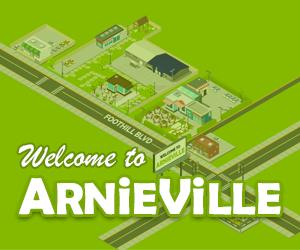Currently, BP Wind Energy operates 10 different sites across the U.S., all of which are operated remotely from a command center located in Houston, according to the company.
British oil and gas company BP announced Monday that it would soon be selling its onshore wind business, BP Wind Energy, as the company shifts to focus on its other renewable interests.
“BP Wind Energy’s assets are high-quality and grid-connected but are not aligned with our plans for growth in Lightsource BP,” said William Lin, BP executive vice president of gas & low carbon energy, in a statement. “We believe the business is likely to be of greater value for another owner. This planned divestment is part of our strategy of continuing to simplify our portfolio and focus on value.”
BP Wind Energy is made up of 10 assets across eight states. Although none of the wind farms are located in Texas, nine of the 10 sites are managed through a remote operating center in Houston. Combined, all of the wind assets have a generating capacity of 1.7 gigawatts. That is enough energy to power over 1 million homes for a year, according to CNET.
BP said it plans to begin the sales process soon and intends to sell BP Wind Energy in its entirety, including all of its current workforce.
Lightsource BP was Europe’s largest solar developer and the world’s largest developer outside of China, as of 2016. In 2023, BP began the process of taking full ownership of Lightsource BP. Once the full acquisition is completed later this year — assuming it receives regulatory approval — the company plans to continue growing its solar business by developing cost-competitive solar and onshore wind assets.
Currently, the U.S. wind industry provides more than 10% of the country’s total power, according to the American Council on Renewable Energy (ACORE).
“Today, wind employs 131,000 Americans, and for several years running, wind turbine technicians have been America’s fastest-growing job,” ACORE told Houston Public Media in a statement. “Wind’s role in our electricity system will only grow in importance as Americans continue to seek more affordable, reliable and clean energy.”
BP’s U.S. headquarters are located in Houston where it employs nearly 4,000 people, its largest employee base worldwide. In 2023 alone, the company said it expanded its onshore oil and gas business in Texas by 13% and plans to increase production by 30 to 40% by 2025, compared to 2022.
In the Gulf of Mexico, BP currently operates five production platforms and is working towards expanding its offshore capacity to produce above 400,000 barrels of oil equivalent per day (boe/d). The company also announced last year that it plans to invest up to $8 billion into “short-cycle” “fast-payback” opportunities.
Although BP is divesting from its wind company, its 187-megawatt Peacock Solar project near Corpus Christi is expected to come online in late 2024, according to its website. BP also owns and operates BP Pulse, an electric vehicle charging business that has worked with Harris County to design EV infrastructure for county fleet vehicles.
Oil companies like BP have been criticized recently for allegedly failing to truly commit to their own climate goals, while actively trying to deceive the public, according to an article published by the Natural Resources Defense Council (NRDC) — an environmental advocacy group founded in 1970.
In May, the House Oversight Committee held a hearing called “Denial, Disinformation, and Doublespeak: Big Oil’s Evolving Efforts to Avoid Accountability for Climate Change” which claimed that BP’s internal messaging did not mirror its advertising.
Testimony from Sharon Y. Eubanks — the former director of the U.S. Department of Justice Tobacco Litigation Team — cites that BP, along with other oil companies like ExxonMobil, Shell, Chevron and Total, spent approximately $195 million a year on climate change-related branding campaigns, but that the messaging was not reflected in the companies’ spending.
“These campaigns vastly exaggerate those efforts because while publicly endorsing climate action, the companies are massively boosting investment in oil and gas extraction, increasing spending to $115 billion in 2019 with just 3% of that directed at low carbon projects,” Eubanks said in her testimony to the committee.
Amanda Levi, the director of policy analysis at NRDC told HPM that although they haven’t directly reviewed BP’s recent decision, the domestic renewable energy market has continued to prosper, thanks in part to government investment.
“Renewable energy is running the table right now,” she said in a statement. “This year, well over 90% of the new electricity getting connected to the grid will be solar, wind, or batteries, according to the Energy Information Administration. And, in part because of the federal investments from the Inflation Reduction Act, there are hundreds more renewable energy projects waiting in the queue. … Clean energy companies added almost 150,000 jobs in 2023, bringing overall U.S. clean energy employment to 3.5 million.”




